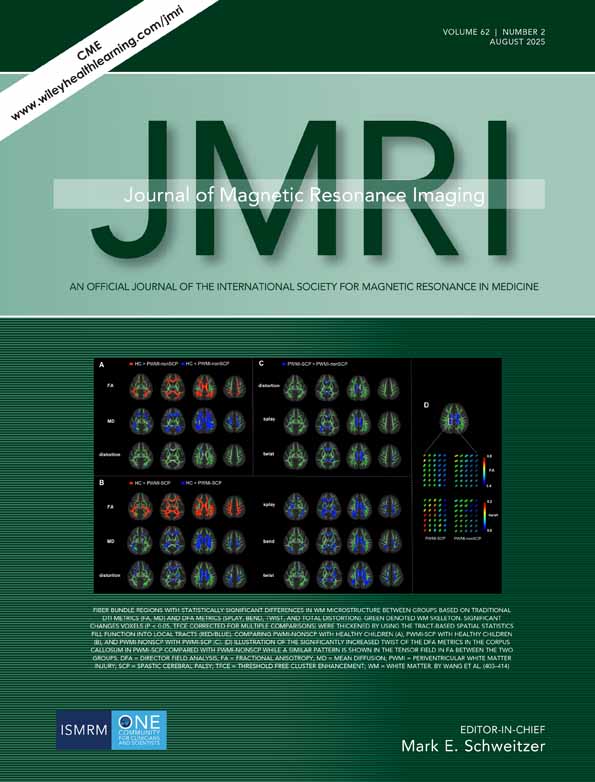Participant Discomfort During 5 T MRI Examinations and Its Contributing Factors
Funding: This work was supported by National Key Research and Development Program of China (no. 2023YFC2410703).
Suwei Liu, Limin Feng, and Yali Li contributed equally to this work.
ABSTRACT
Background
5 T magnetic resonance imaging (MRI)-induced patient discomfort and the associated contributing factors remain unclear.
Purpose
To assess the frequency of discomfort during 5 T MRI examinations and analyze the contributing factors that may lead to discomfort, understand the potential challenges, and improve patient experience with 5 T systems.
Study Type
Prospective study.
Population
A total of 539 participants, comprising patients and healthy volunteers.
Field Strength/Sequence
5.0 T.
Assessment
Each participant completed a post-MRI examination tolerance questionnaire evaluating discomfort and overall examination experience. Each type of discomfort was analyzed separately to determine its relationship with the contributing factors. Further analysis identified specific elements that had the most significant impact within each factor and examined interdependencies among discomfort types.
Statistical Tests
Chi-square and Mann–Whitney U tests were used to compare the presence of discomfort across contributing factors. One-way analysis of variance or Kruskal–Wallis tests assessed the relationship between discomfort and contributing factors. Spearman's rank correlation evaluated interdependencies among different types of discomfort.
Results
The rank order of discomfort was noise (13%), examination area heat (8.2%), and vertigo while moving (6.1%), whereas 72.8% (381/523) of participants reported no discomfort during the examination. Regarding the overall examination experience, less than 1% of the participants reported an unpleasant experience (2/539), 3% a neutral experience (17/539), and over 96.5% a pleasant experience (520/539). Additionally, space constraints, noise, paresthesia, examination area heat, whole-body heat, and overall examination experience were significantly influenced by different variables. Moreover, varying degrees of correlation were observed among different discomfort types.
Data Conclusion
The 5 T MRI system is clinically safe, with minimal reported discomfort. Optimization strategies addressing contributing factors could enhance patient comfort and facilitate broader adoption of 5 T MRI technology.
Evidence Level
2
Technical Efficacy
Stage 2.




